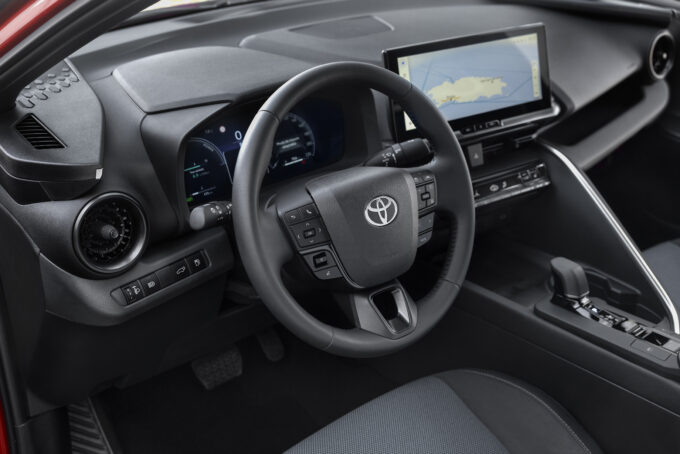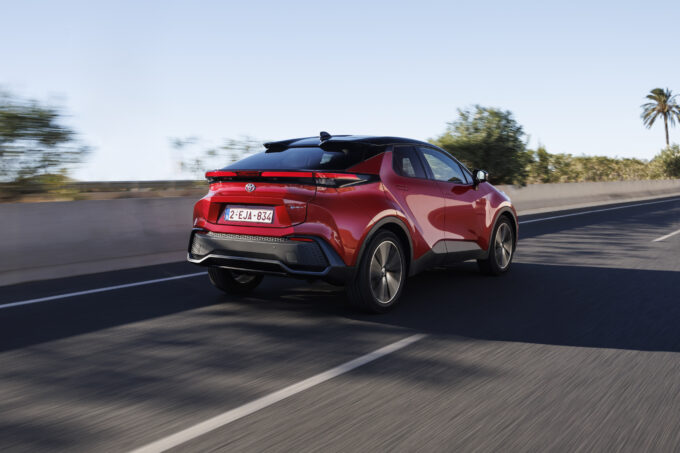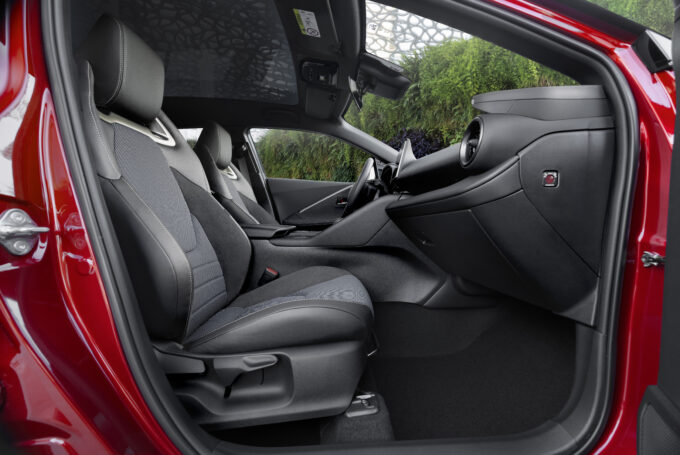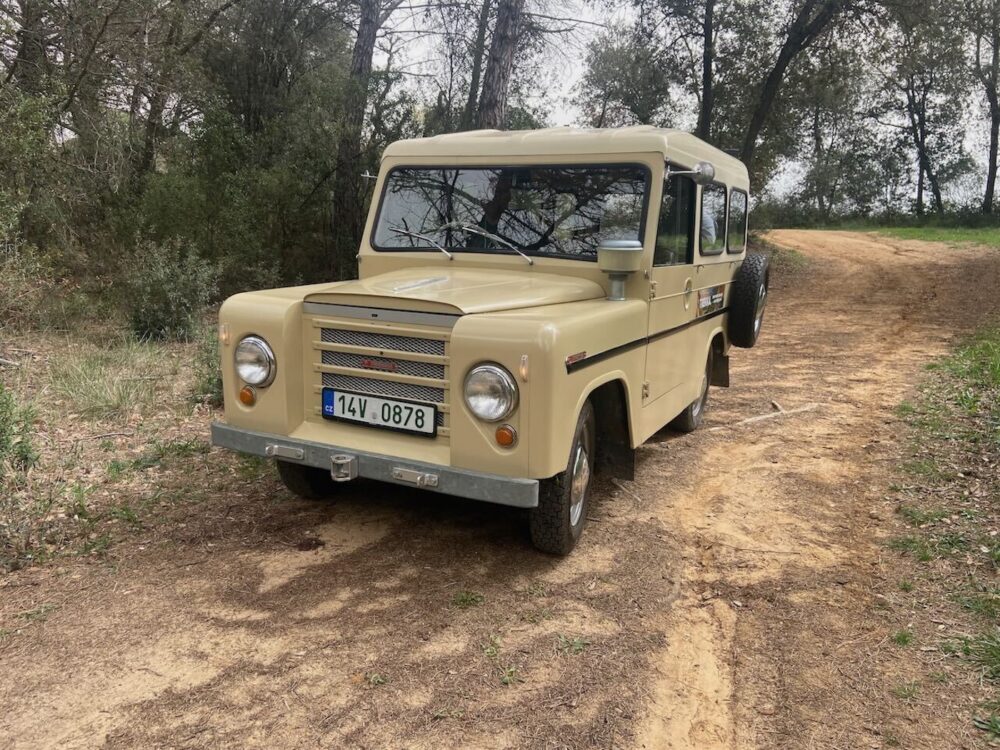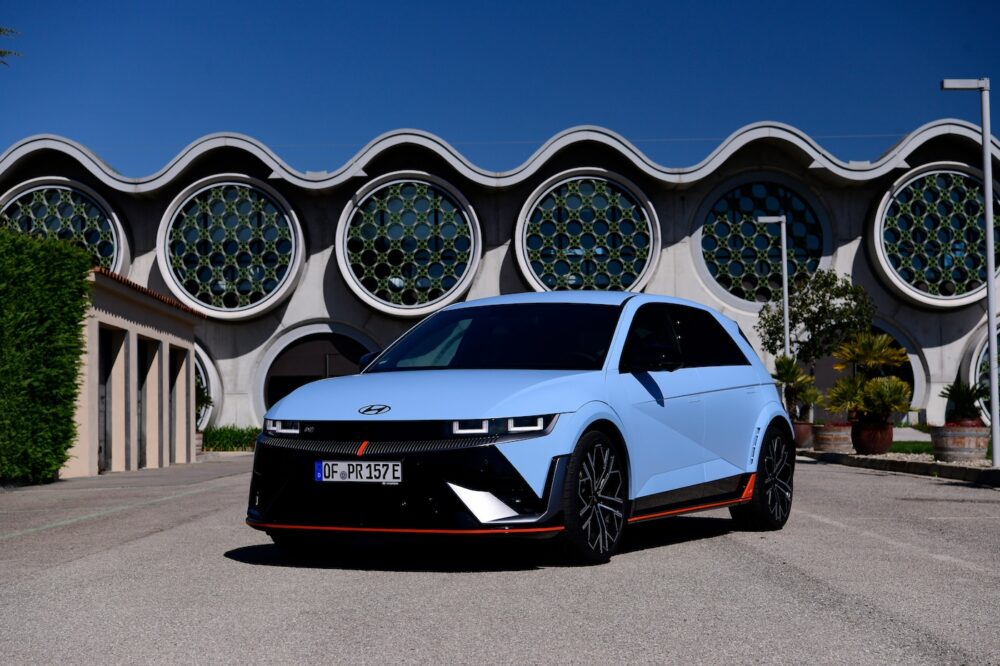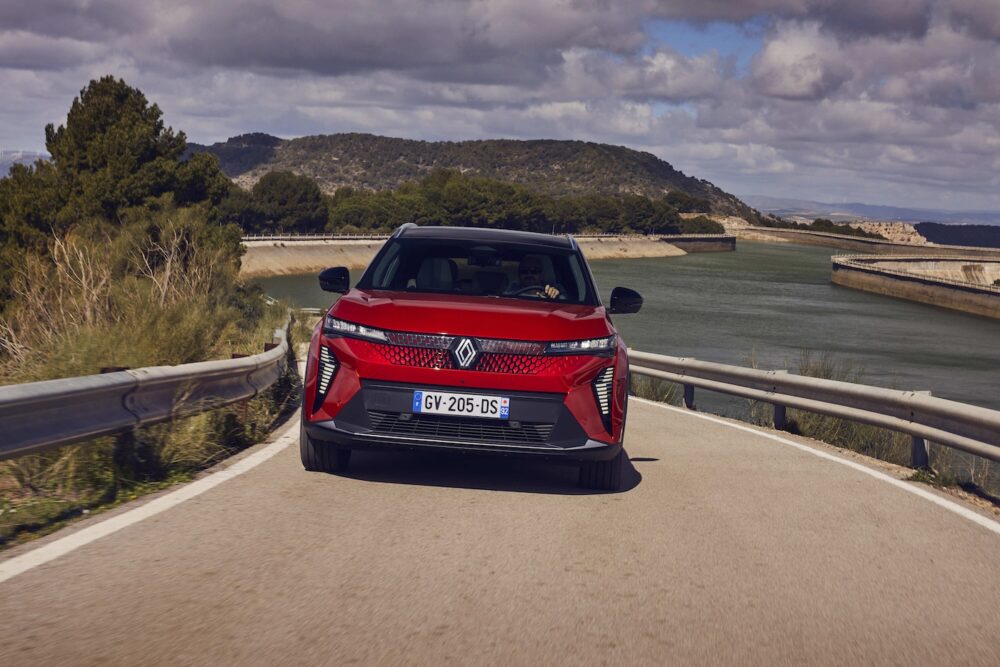Toyota: First kilometers with the new C-HR 🎥
HYBRIDMEISTER The second generation of the Toyota C-HR has been subtly but comprehensively updated. The compact sports SUV is now available with two full hybrid powertrains and eye-catching two-tone paintwork.
In the new edition, which was developed in and for Europe, the Toyota C-HR comes with a slightly more discreet, but still accentuated exterior design. In a category where design plays a particularly important role, the two-tone paint finish makes it look especially special. In this bi-tone version, the entire rear section and the roof are finished in black. Also striking on the outside are the flush-fitting door handles, a first for Toyota. According to the manufacturer, the use of pre-colored resin materials for the bumpers saves a lot of CO2 save.
Special exterior lighting
Toyota is also right on trend with its choice of interior materials. The new steering wheel and seat covers, for example, are pet-free. At the start of the journey, the driver is greeted by a special exterior lighting pattern, and the seat position and display are automatically adjusted to suit personal preferences. Ambient lighting is available in many colors. There are three preset layouts for the fully digital 12.3-inch instrument cluster with configurable displays. The front seats are comfortable and can be adjusted to suit people of all heights. However, because the vehicle is only 4.36 meters long, there is only room for smaller people in the rear.
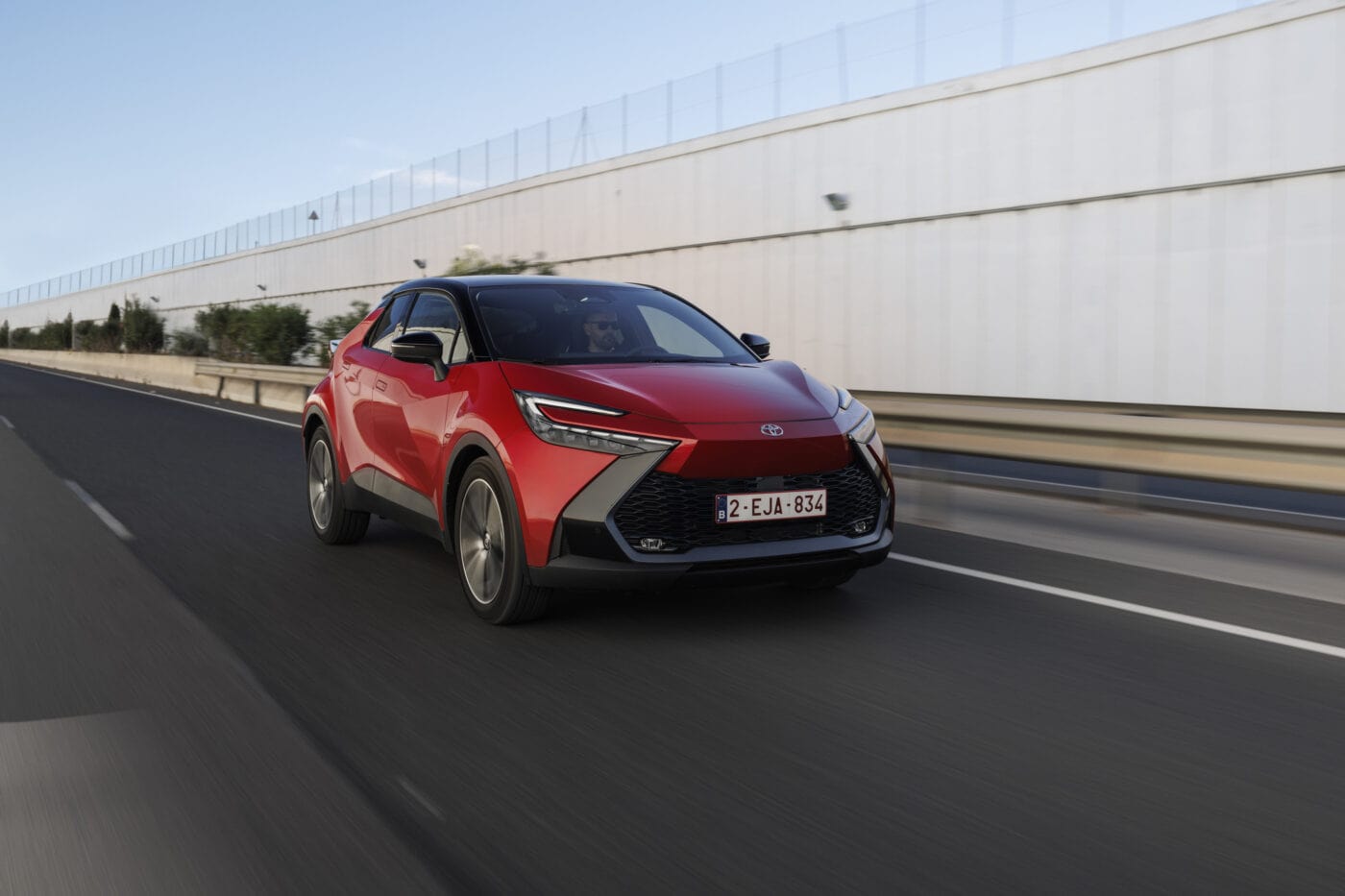
Fifth generation hybrid drive
One of the highlights of the new C-HR is the self-charging full hybrid system, which has been improved step by step since the launch of the Prius model at the turn of the century and is still exemplary today. In the new C-HR generation, it is used in conjunction with a 1.8-liter or a 2-liter petrol engine. The 1.8 Hybrid variant is combined with front-wheel drive and, together with the electric motor, delivers 140 hp and a torque of 185 Nm. According to the WLTP standard, this model gets by with 4.8 liters of petrol per 100 kilometers. The 2.0 AWD models are equipped with a slightly larger petrol engine and also a 30 kW electric motor on the rear axle. This results in a system output of 198 hp with a maximum torque of 206 Nm. The plug-in version 2.0 AWD PHEV will follow at the beginning of next year.
With 198 hp to 100 km/h in 7.9 seconds
On the road, you feel well motorized with both drive variants. If you don't necessarily need all-wheel drive, the entry-level 1.8 FWD version is also a comfortable vehicle with sufficiently good performance. And with an appropriately adapted driving style, the low standard consumption should also be easy to maintain. With a kerb weight of 1535 kilograms, the front-wheel drive C-HR also remains modest. The slightly more powerful 2.0 AWD weighs just under 100 kilograms more. It can accelerate from a standstill to 100 km/h in 7.9 seconds and reaches a maximum speed of 170 km/h.
In-house battery production under construction
Naturally, the new C-HR is also equipped with many more or less useful assistance systems. In normal traffic, the first thing that catches the driver's eye is the proactive driving assistant, which initiates gentle braking when catching up with a car in front at a lower speed or before tight bends.
At 36,900 Swiss francs, the entry-level version also boasts an attractive price. Prices for the 2.0 AWD models range from 43,900 (Trend) to 51,100 (GR Sport). Incidentally, the European C-HR is manufactured at the Turkish plant in Sakarya, where the company's own battery production facility for hybrid vehicles is currently being set up.







